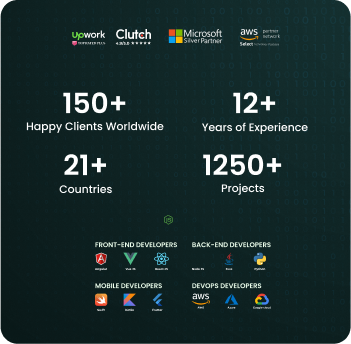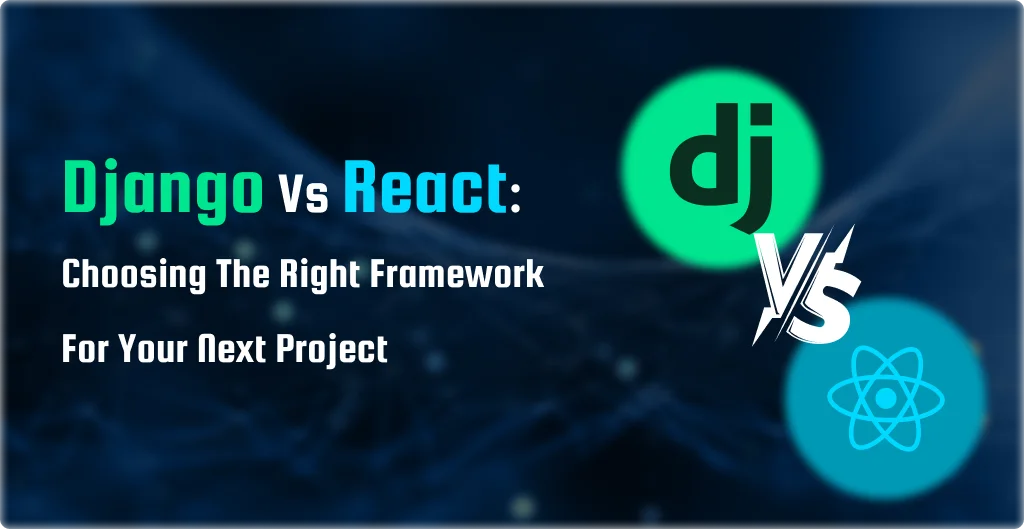Table of Contents
Over the years, software development has evolved, and experts have developed various methodologies to enhance the process. Spiral model in SDLC is one of them, which involves a continuous feedback loop and iterative approach to custom software development , aimed at constant improvement.
This blog will discuss the advantages of the Spiral methodology, how it operates, and common inquiries about its use in SDLC.
What Is Spiral Model In SDLC?
The spiral model is introduced by Barry Boehm in 1986. This model is a combination of the iterative nature of the prototyping model and the systematic aspects of the waterfall model. It is a flexible and adaptable approach that can be applied to various situations, making it a popular choice for software development techniques. The Spiral model in SDLC follows a continuous spiral, with each iteration consisting of four primary stages:
- Planning
- Risk Analysis
- Engineering
- Evaluation
How Spiral Methodology In SDLC Works:
The Spiral model in SDLC consists of four main stages, repeated in a continuous spiral until the software is complete.
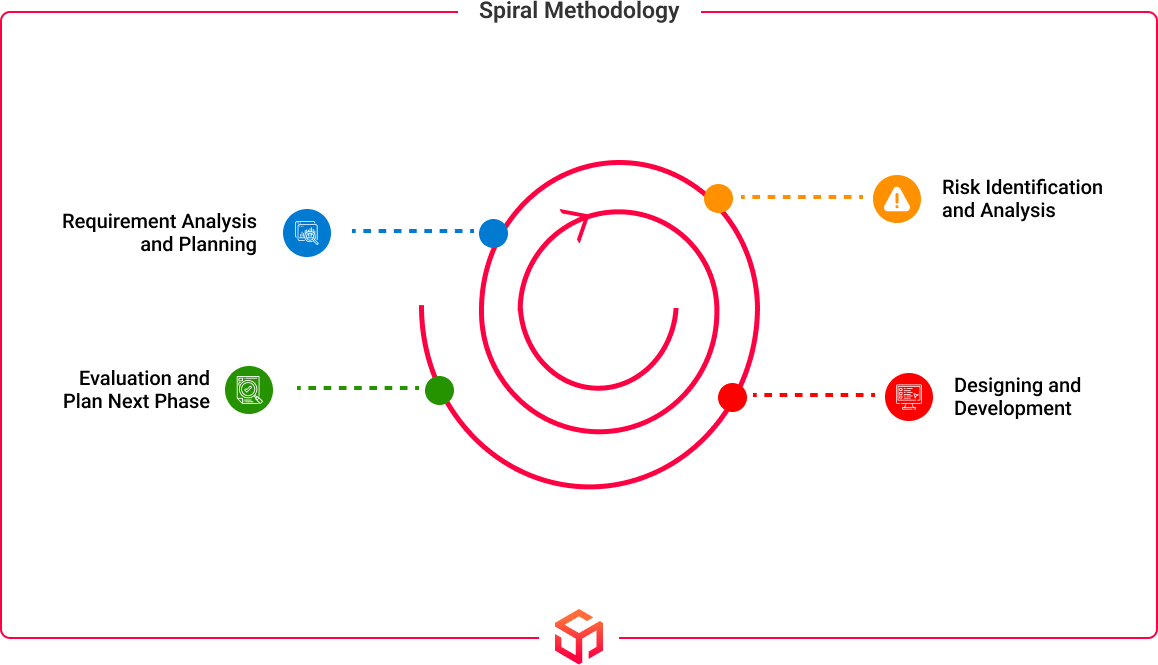
Planning:-
In the Planning stage, the project is defined, and goals established. The scope of the project is also determined, and a plan is created for the next stage. This stage in spiral model in SDLC involves the identification of requirements, including functional and non-functional requirements, as well as design constraints.
Risk Analysis:-
In the Risk Analysis stage, potential risks identified, and steps taken to mitigate them. This involves a detailed analysis of the project and potential risks that may arise during software development. Risks categorized into different types, including technical risks, scheduling risks, and budget risks. Technical risks include issues with hardware or software, such as compatibility issues or performance problems.
Scheduling risks involve delays that may occur during the software development process, while budget risks involve cost overruns or other financial issues that may arise. Risk mitigation strategies developed based on the identified risks. These strategies designed to reduce the likelihood and impact of potential risks.
Looking to Hire Software Developers? Contact Soft Suave
Engineering:-
The development team develops, tests, and refines the software during the Engineering stage. They create most of the software during this stage using an iterative approach, building on each previous iteration. The team designs and implements the software based on the requirements identified in the planning stage. They test the software to ensure it meets the required quality standards and fix any defects or bugs that are identified.
Evaluation:-
During the Evaluation stage of the Spiral model in SDLC, experts evaluate the software to determine if it meets the requirements established in the Planning stage. If changes are necessary, the spiral model process starts again until the software is complete. The software is assessed based on its functionality. Stakeholders provide feedback during the evaluation stage, which is used to identify areas for improvement. This feedback is used to refine the software and to make any necessary changes before the next iteration.
The Spiral model in SDLC is a continuous process, with each iteration building on the previous one. The process continues until the software is complete and meets all of the established requirements.
Benefits Of Spiral Model In SDLC:
The Spiral methodology in SDLC offers several benefits that can make a huge impact in both development of the software and also for the great outcome with timely deployment, here are some of the main benefits including,
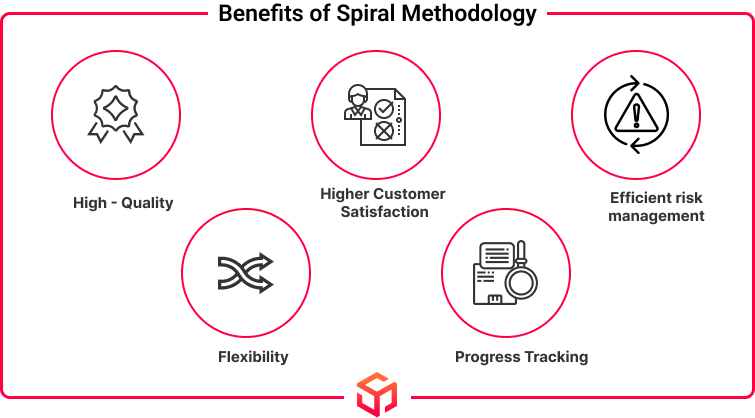
Flexibility:-
The Spiral model used in Software Development Lifecycle (SDLC) is incredibly flexible and can be customized to suit the specific requirements of a software development project. This methodology allows for continuous improvement and feedback, making it easier to adjust the approach as necessary. This is particularly valuable when the project requirements are not well-defined and require constant changes and adaptations.
Risk Management:-
The designers of the Spiral model designed it to identify and mitigate risks early on in the software development process. This approach assists in decreasing the probability of significant problems arising later in the project. When teams identify risks early on, they can develop strategies to mitigate these risks before they become major issues.
Progress Tracking:-
Easy tracking of progress throughout the development process is possible with the Spiral model. This approach simplifies the identification of areas that require improvement and allows for the necessary changes to be made. Project managers can monitor progress and adjust resources as necessary to keep the project on track using the Spiral model in SDLC.
Conclusion:
The Spiral methodology in software development life cycle (SDLC) provides benefits such as flexibility, risk management, and progress tracking. By managing risks properly, the associated risks with this approach can be minimized. Soft Suave has expertise in implementing the Spiral model in SDLC, which can ensure efficient completion of high-quality software development projects.
Partnering with Soft Suave can help businesses achieve better outcomes in software development and greater success in the marketplace
Are you looking for top-notch software development services?
Our team of experienced developers can help you build high-quality software solutions that meet your business needs.
Frequently Asked Questions (FAQ)
The Spiral methodology is best suited for projects that are complex and have a high degree of uncertainty. It is also ideal for projects that require constant change and adaptation.
The Waterfall methodology is a linear, sequential approach to software development, while the Spiral methodology is an iterative, flexible approach. The Waterfall methodology is best suited for projects with well-defined requirements, while the Spiral methodology is better suited for projects with high levels of uncertainty and change.
The main risks associated with using the Spiral methodology are related to the iterative nature of the process. If risks are not properly identified and managed, they can lead to delays and cost overruns. However, by properly identifying and mitigating risks, these issues can be minimized.
The Spiral methodology improves risk management by identifying and mitigating risks early in the development process. By identifying risks early on, teams can develop strategies to mitigate these risks before they become major issues. This helps to reduce the likelihood of major issues arising later in the project.

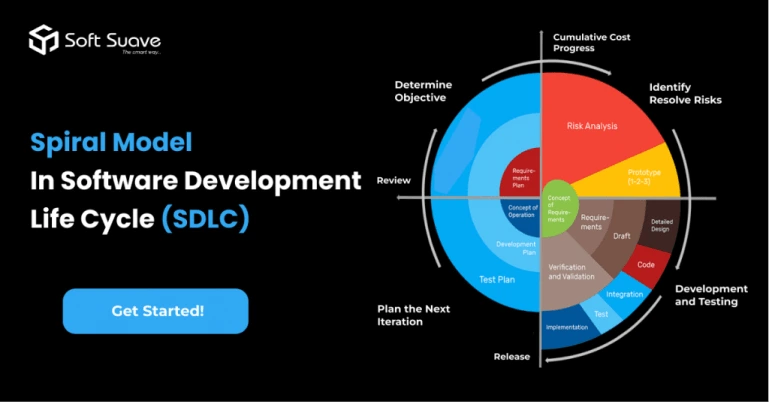





 8 Years of experience
8 Years of experience
